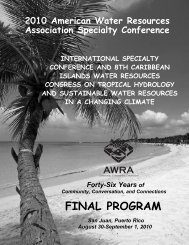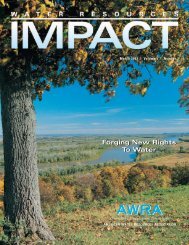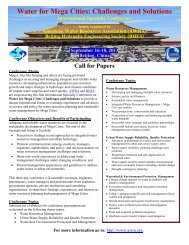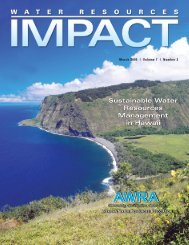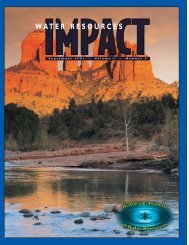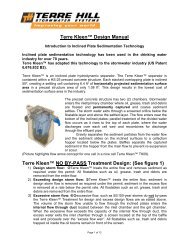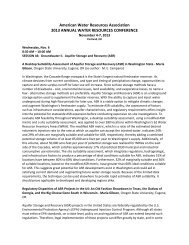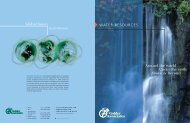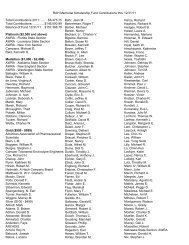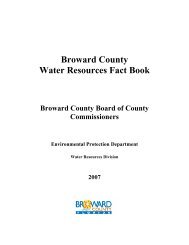N ovember 2 0 0 0 ⢠V olume 2 ⢠N umber 6 - American Water ...
N ovember 2 0 0 0 ⢠V olume 2 ⢠N umber 6 - American Water ...
N ovember 2 0 0 0 ⢠V olume 2 ⢠N umber 6 - American Water ...
Create successful ePaper yourself
Turn your PDF publications into a flip-book with our unique Google optimized e-Paper software.
MSU-WATER (<strong>Water</strong>shed Action Through Education and Research) . . . cont’d.<br />
Peter McPherson, 1999). The MSU-WATER committee<br />
has worked for more than a year with the University’s<br />
President, Provost, and Vice President for Finance and<br />
Operations and Treasurer to work out the details necessary<br />
for MSU to invest $1.4 million over the next four<br />
years to design MSU-WATER and to establish itself as a<br />
leader in interdisciplinary water sciences teaching, research,<br />
and outreach.<br />
MSU-WATER<br />
Led by faculty, staff, and students representing five<br />
colleges, 16 departments, and several support units within<br />
the University, as well as partners from state and local<br />
governmental regulatory agencies, MSU-WATER will include<br />
physical, chemical, biological, and human assessments<br />
in order to identify the most pressing water-related<br />
issues and research opportunities. A watershed management<br />
plan will be developed for campus, and multidisciplinary<br />
teams comprised of faculty, staff, and students<br />
will address each priority area identified in the plan in cooperation<br />
with public and private external partners in accordance<br />
with EPA requirements under Phase II of the<br />
Clean <strong>Water</strong> Act (EPA, 1999). A variety of watershed management<br />
techniques that integrate research, outreach<br />
and teaching will be implemented, and practical and affordable<br />
solutions to water quality problems will be generated<br />
and shared with others.<br />
BACKGROUND<br />
Recent amendments to the Federal Clean <strong>Water</strong> Act<br />
require that all communities with populations of 50,000<br />
or more and densities equal to or greater than 1000 people<br />
per square mile obtain a storm water discharge permit<br />
if they discharge pollutants into a surface water body.<br />
In Michigan, a total of 22 counties and 252 institutions<br />
are affected by the Federal requirements. These communities<br />
are being encouraged to develop watershed management<br />
plans that clearly document how they will limit<br />
their discharges and meet the long-term goal of zero discharge<br />
before they are issued permits. Many of these<br />
communities possess neither the resources nor technical<br />
expertise necessary to address these requirements. This<br />
provides a tremendous opportunity for MSU, as a premier<br />
Land Grant University, to provide critically needed research,<br />
technical assistance, education, and outreach<br />
services to these communities.<br />
Land Grant Universities have been credited with increasing<br />
agricultural output by seven fold during the last<br />
century. MSU-WATER will allow MSU to extend this leadership<br />
into the natural resources field and carry the Land<br />
Grant University mission into the new century. By developing<br />
its own watershed management plan and implementing<br />
a series of water management demonstration<br />
sites on campus, MSU will generate new ideas that can<br />
be transferred to local units of government, developers,<br />
20 • <strong>Water</strong> Resources IMPACT N<strong>ovember</strong> • 2000



